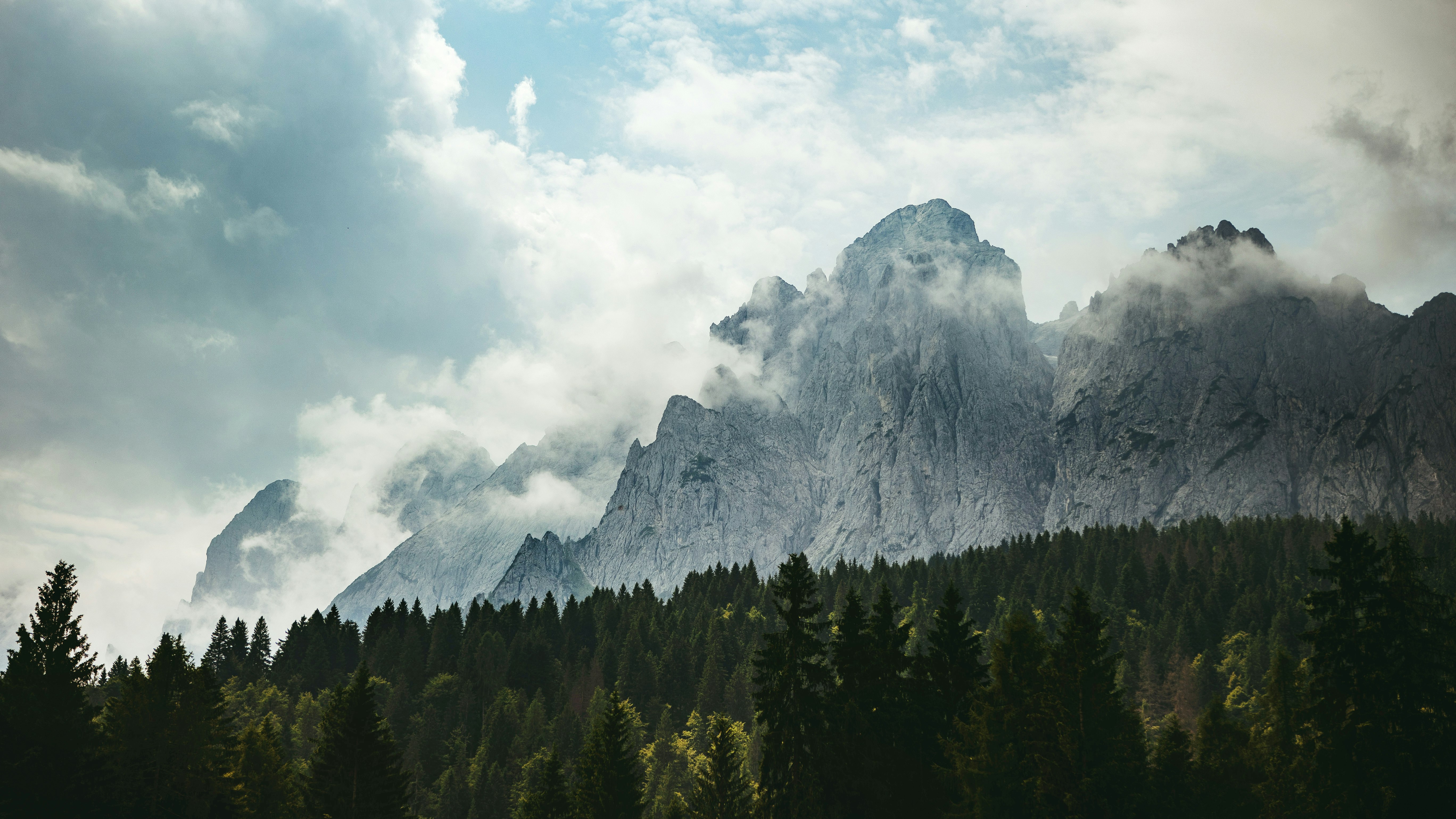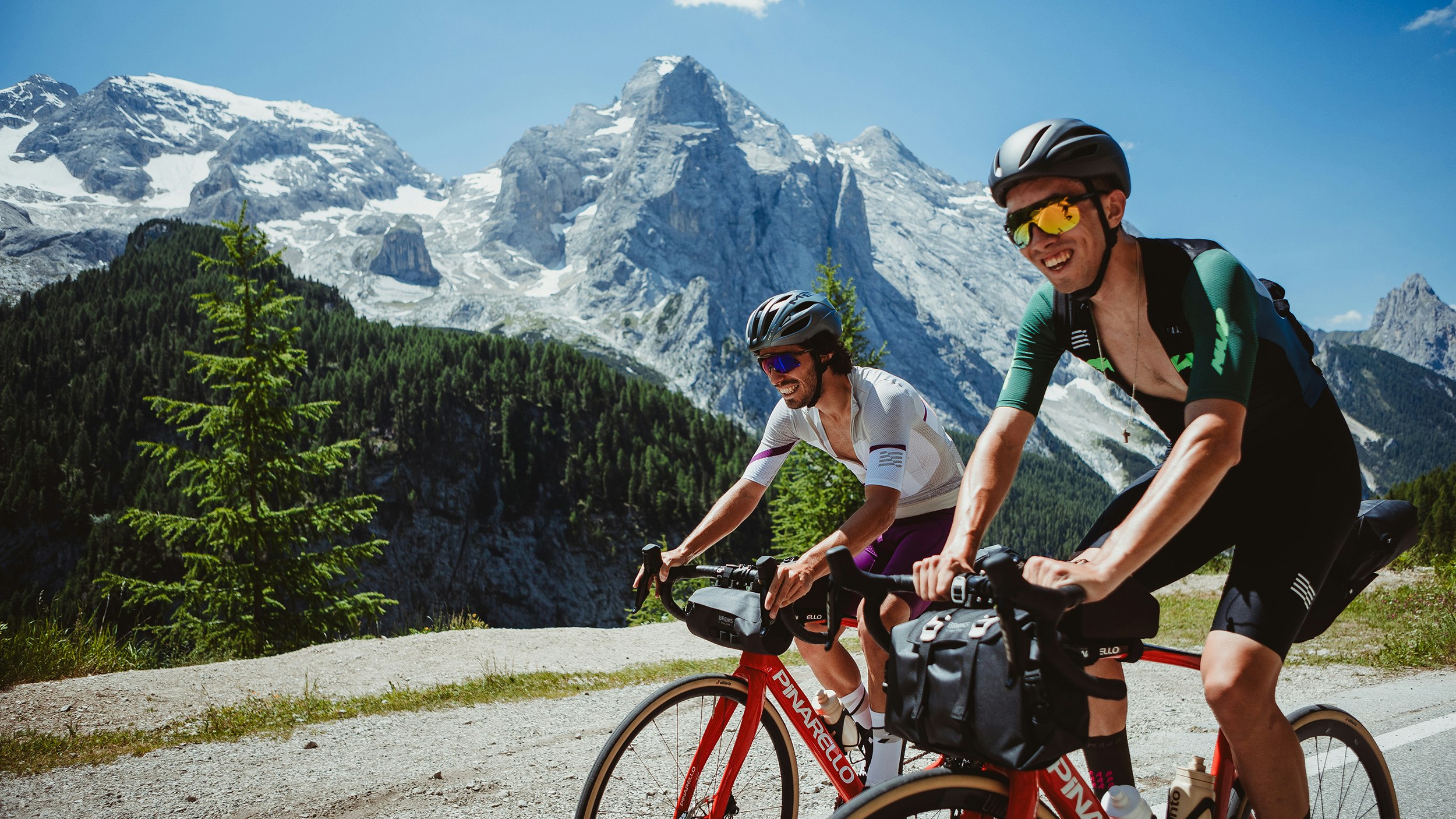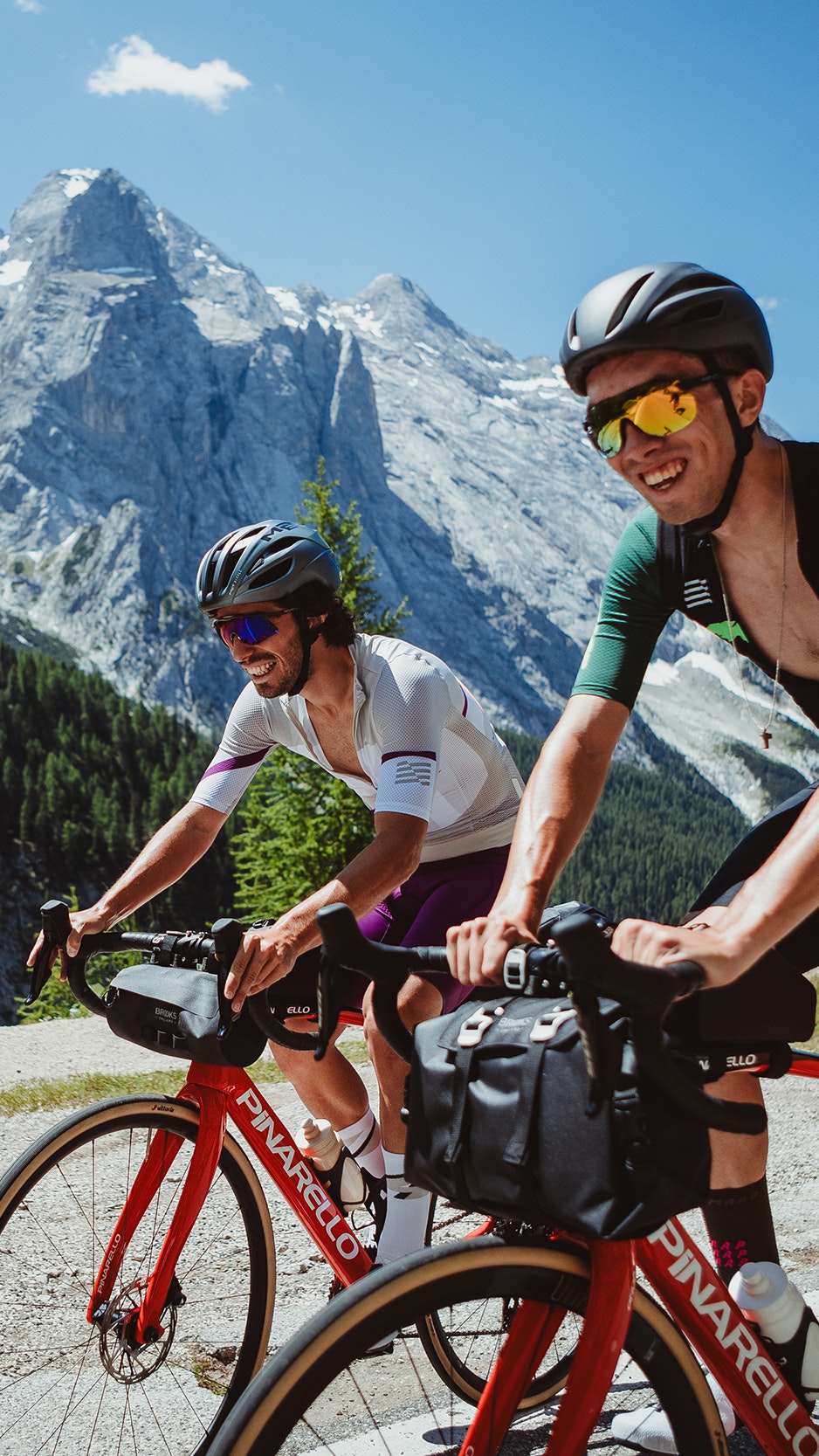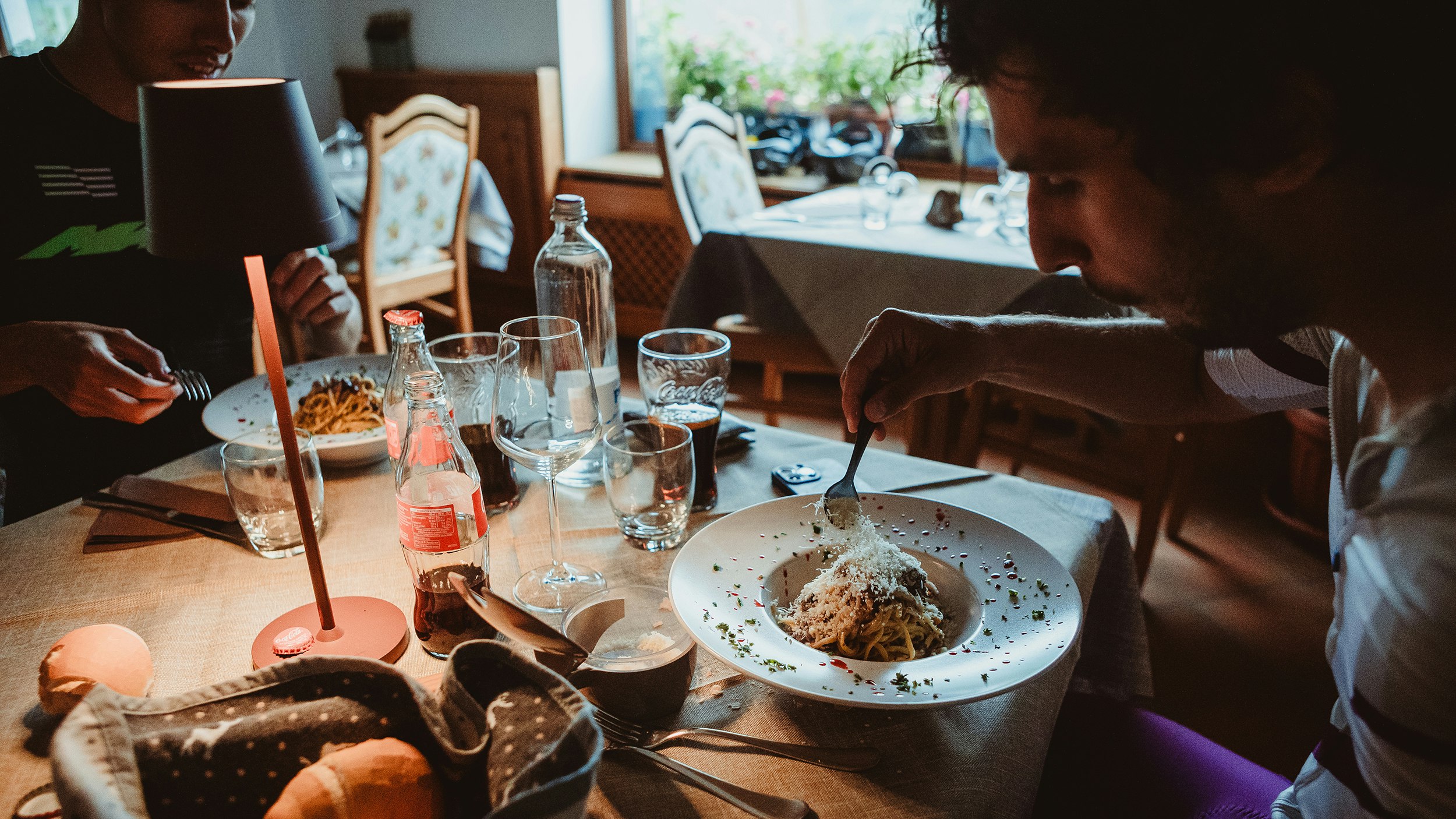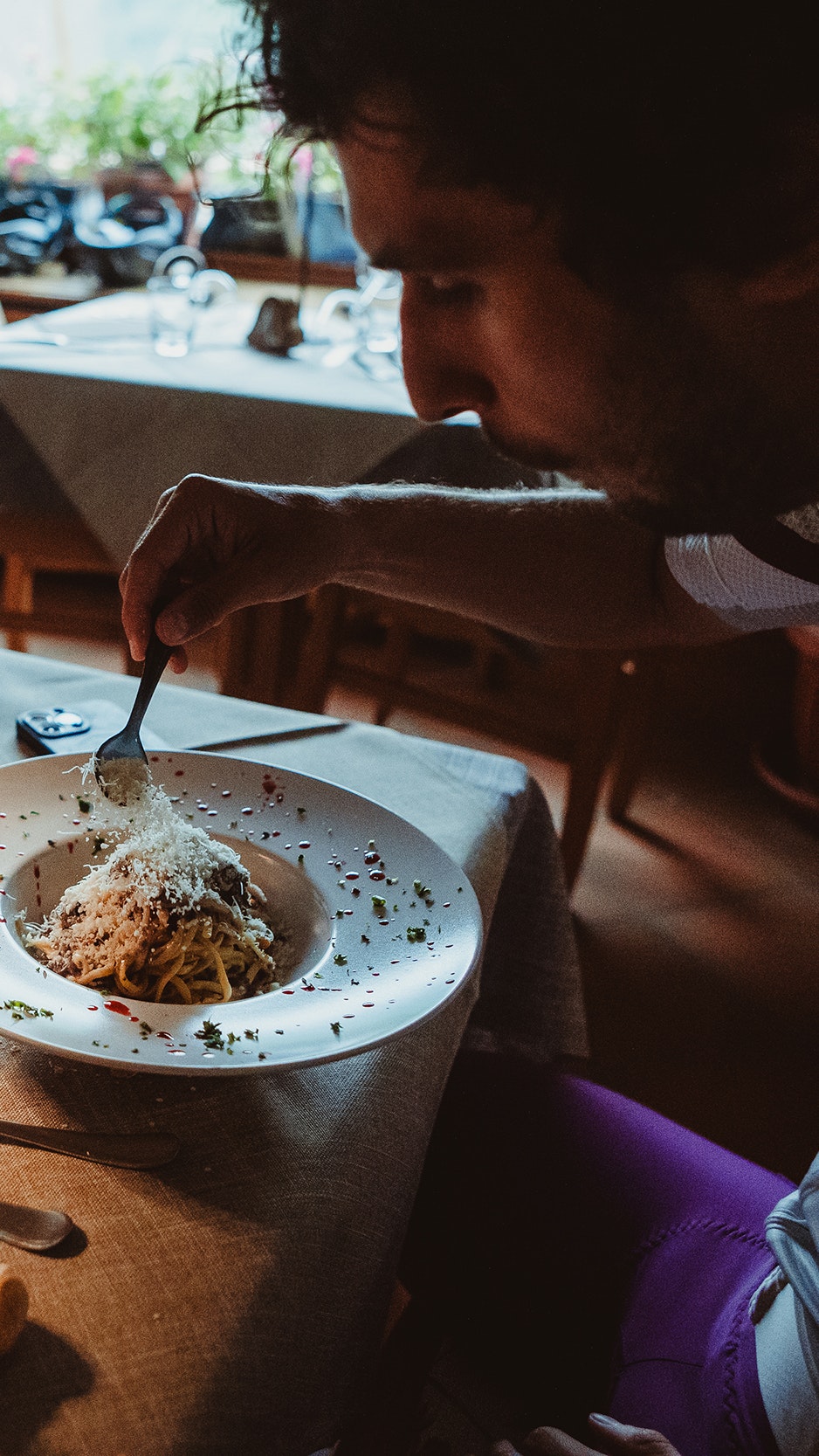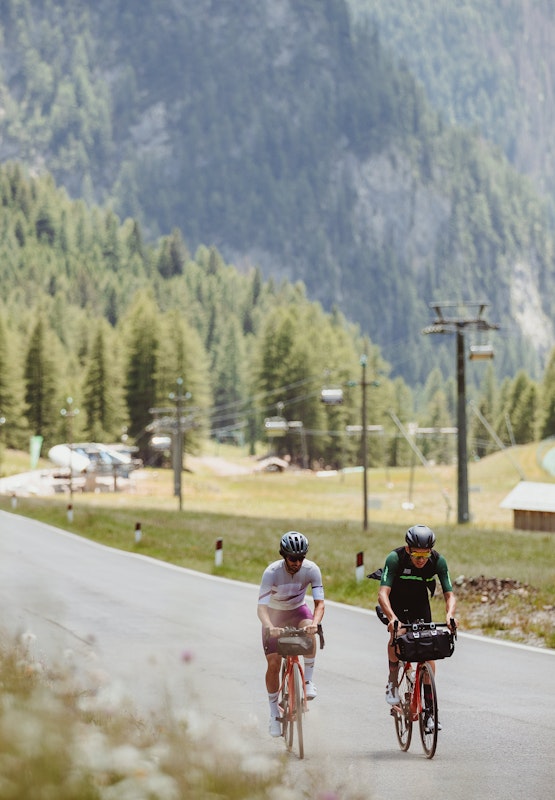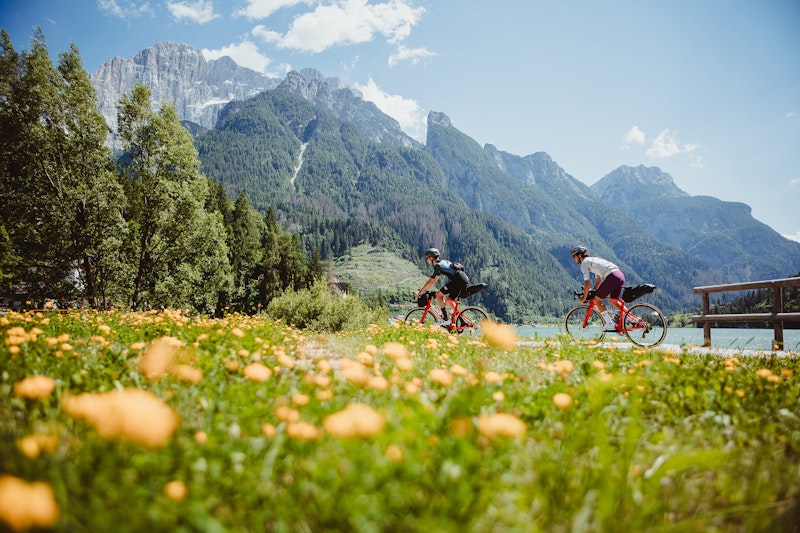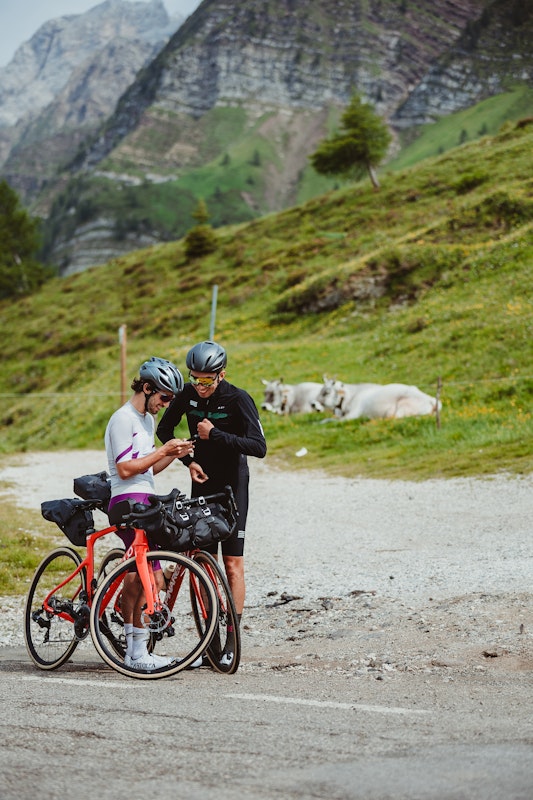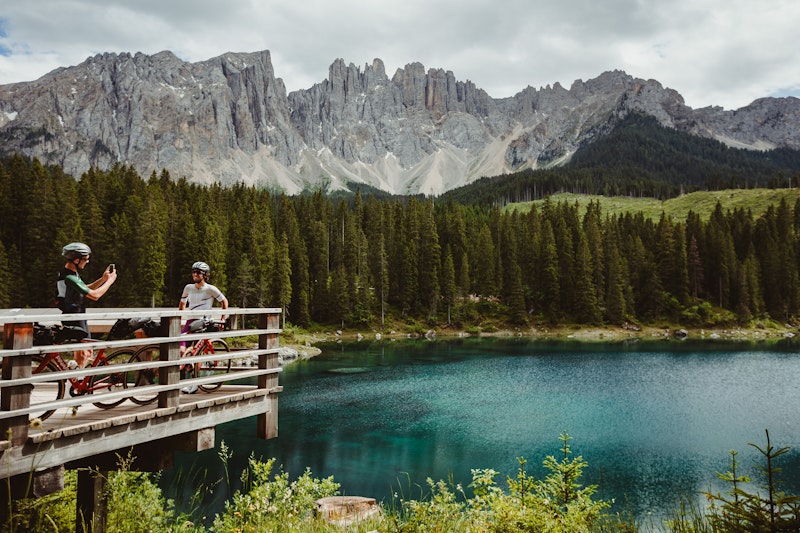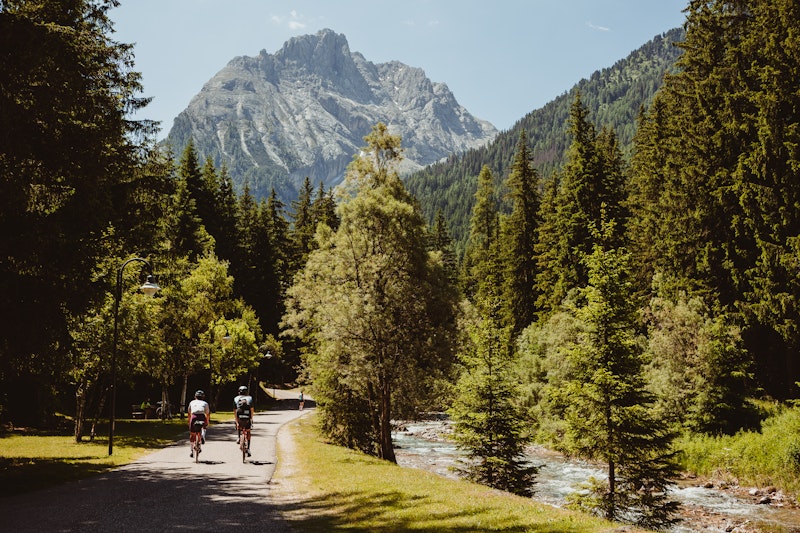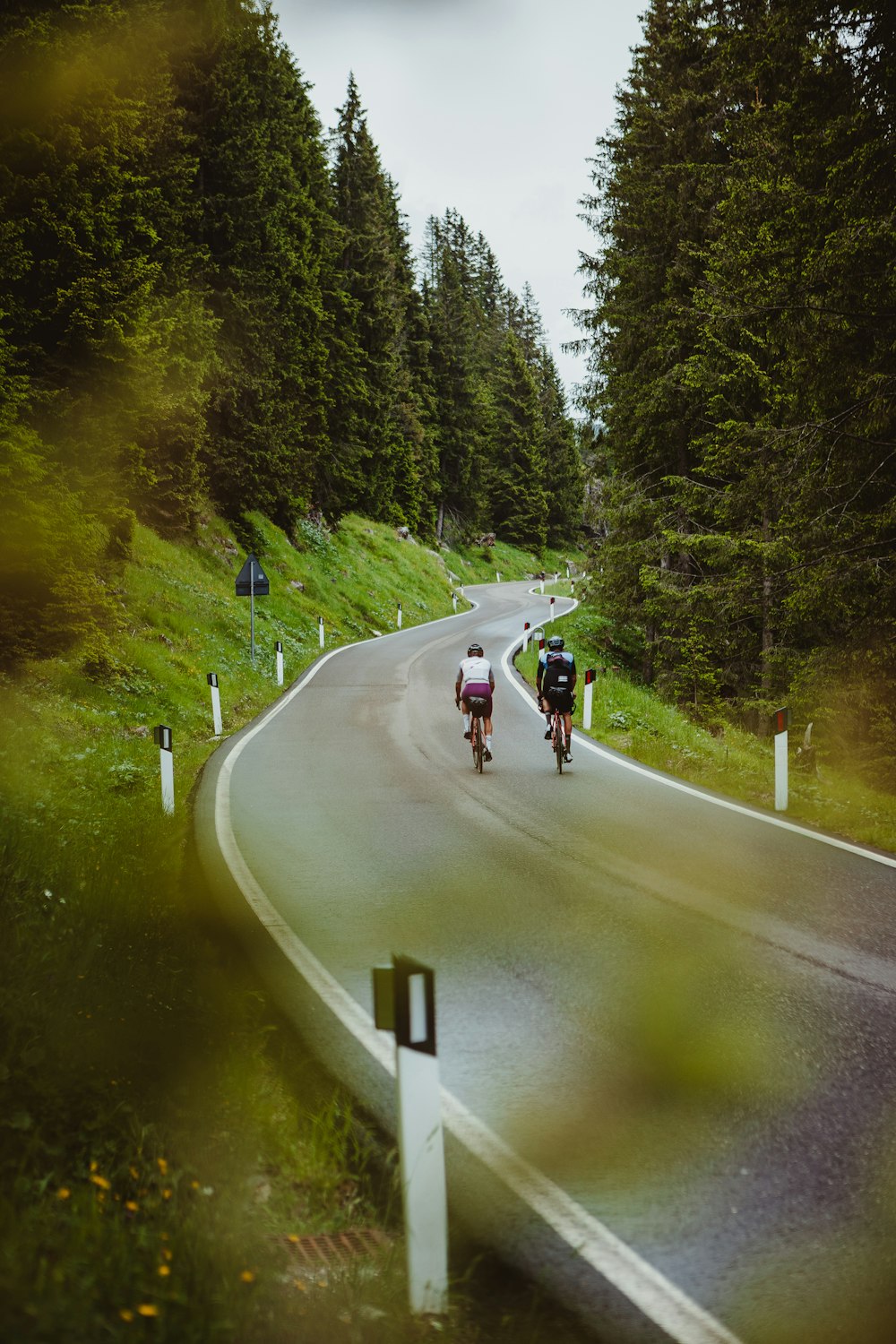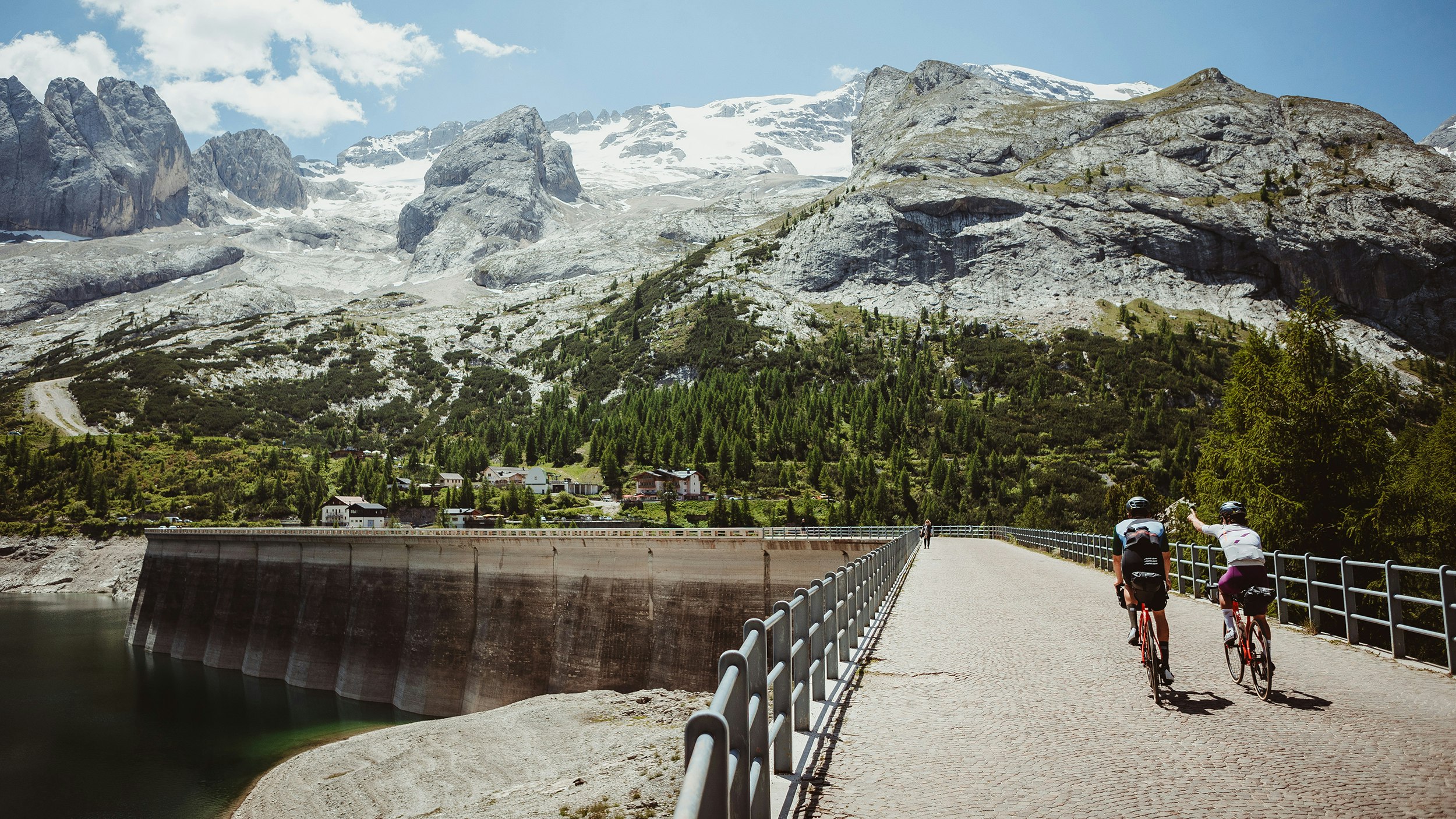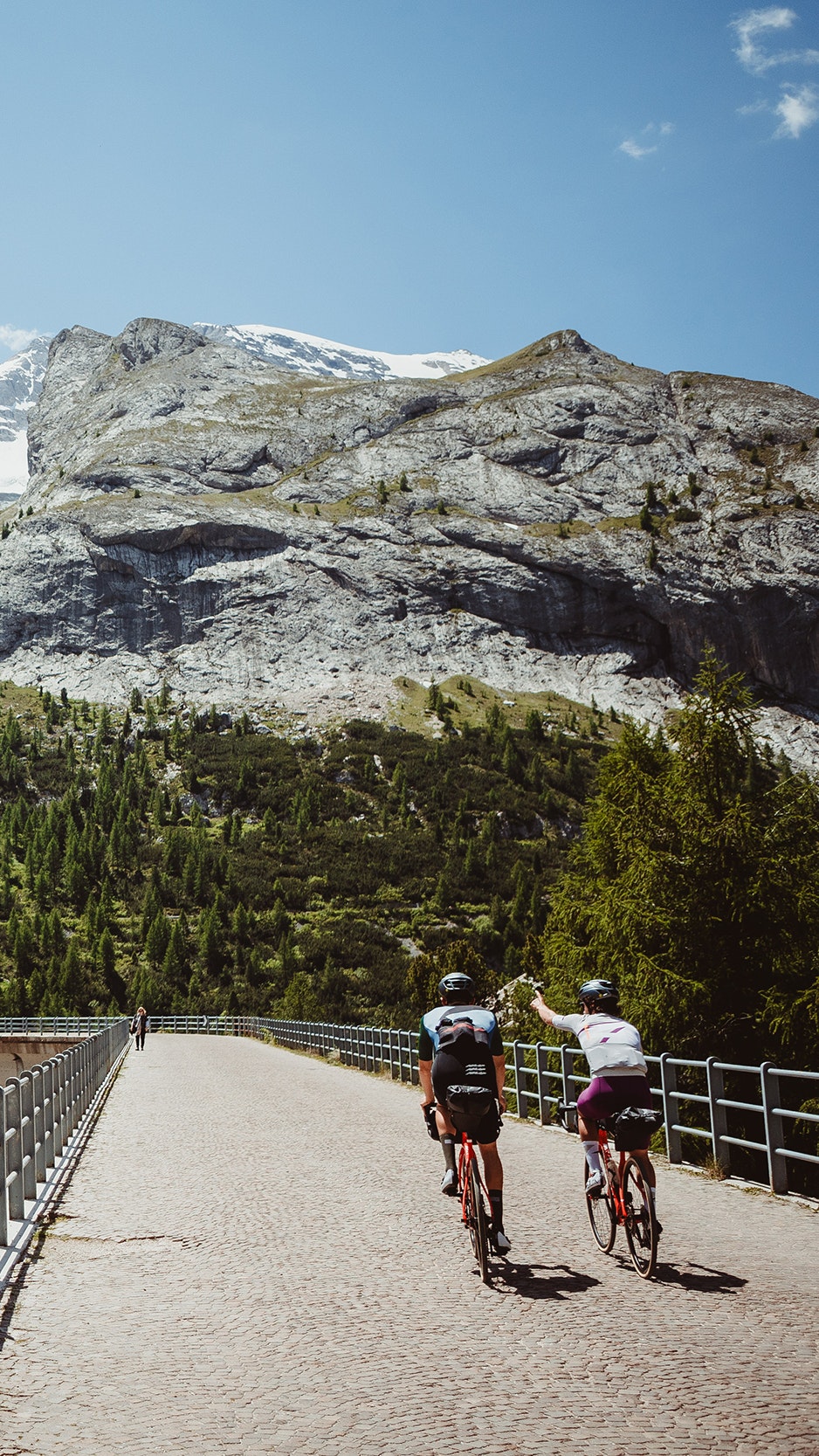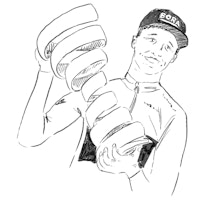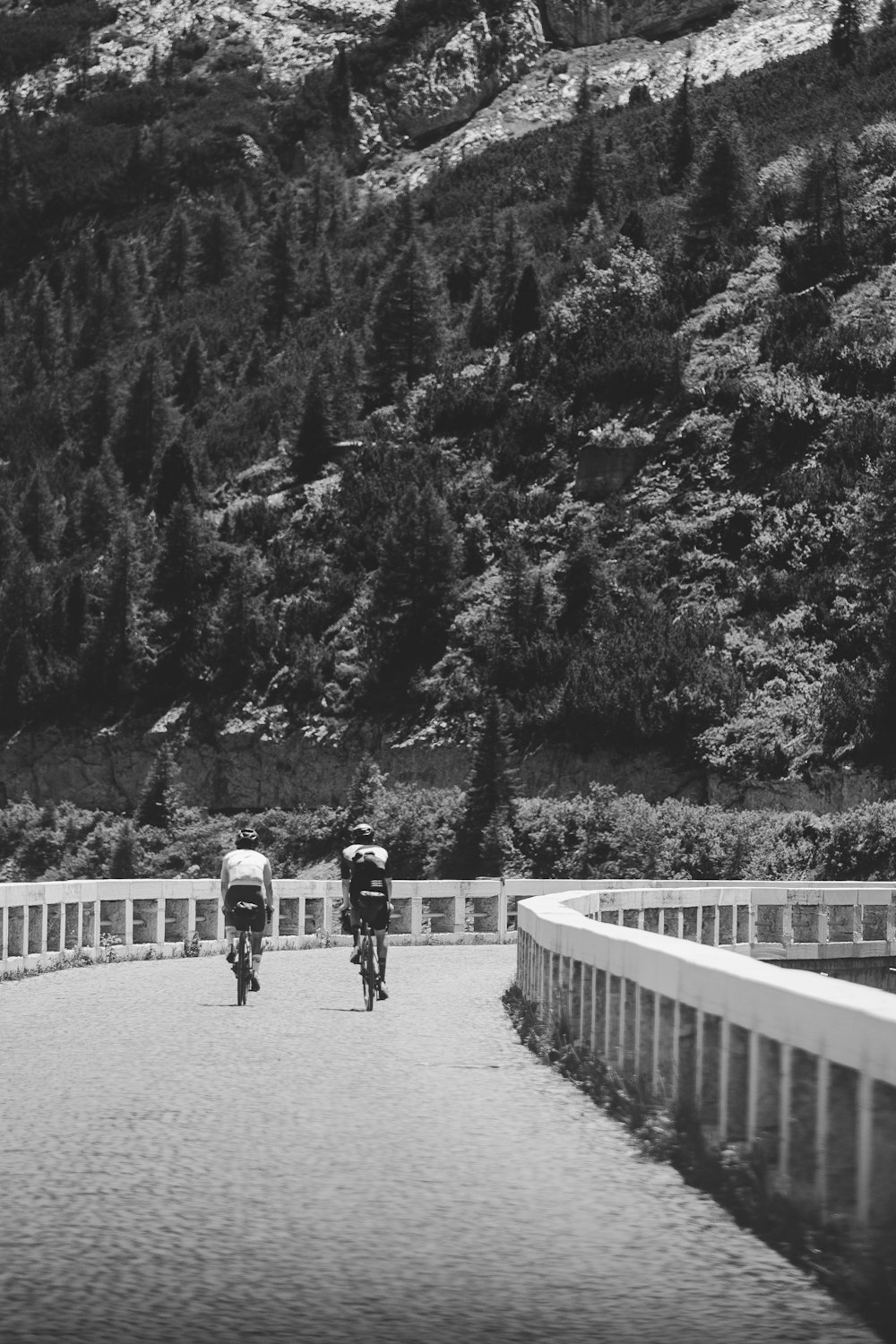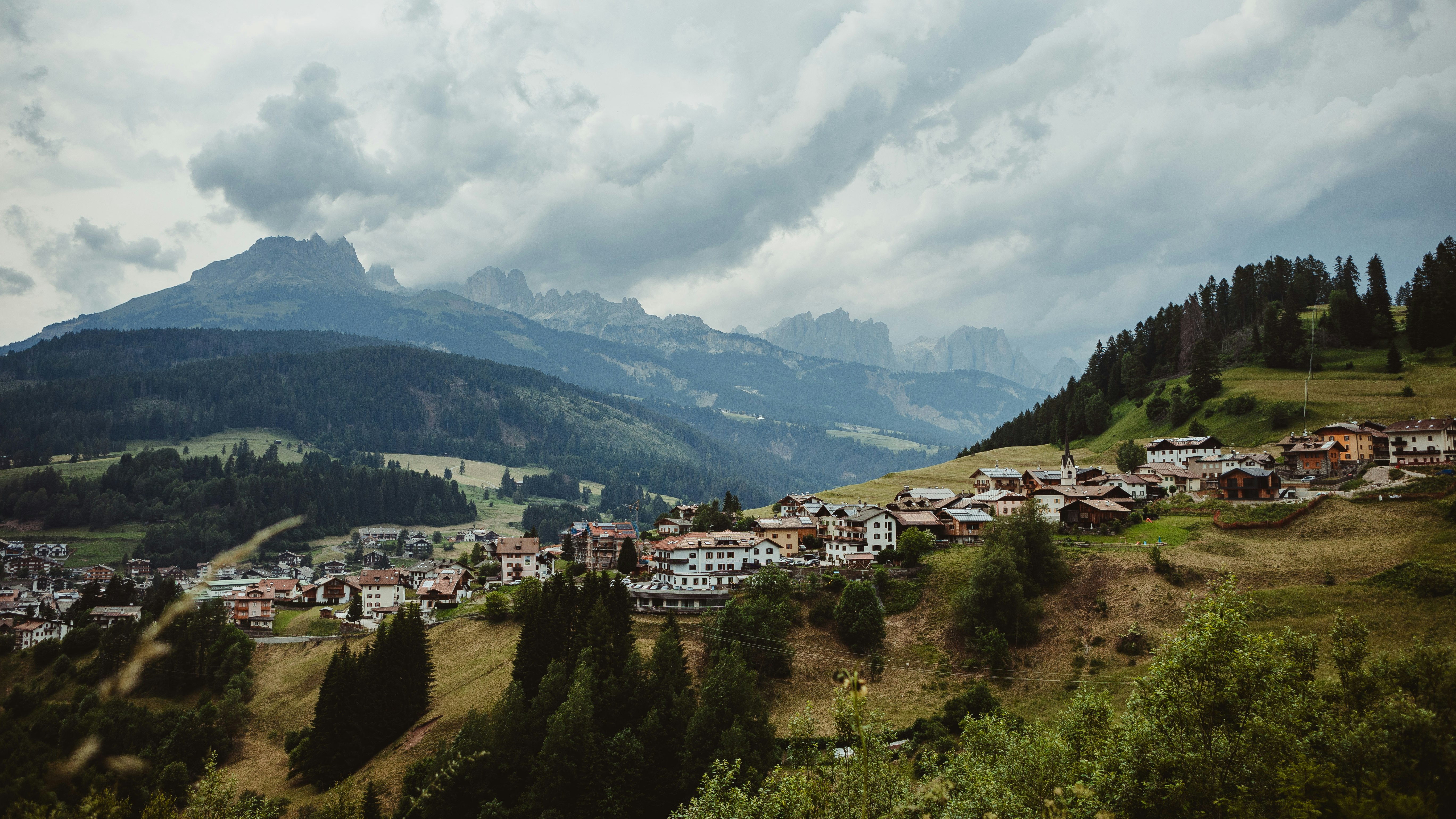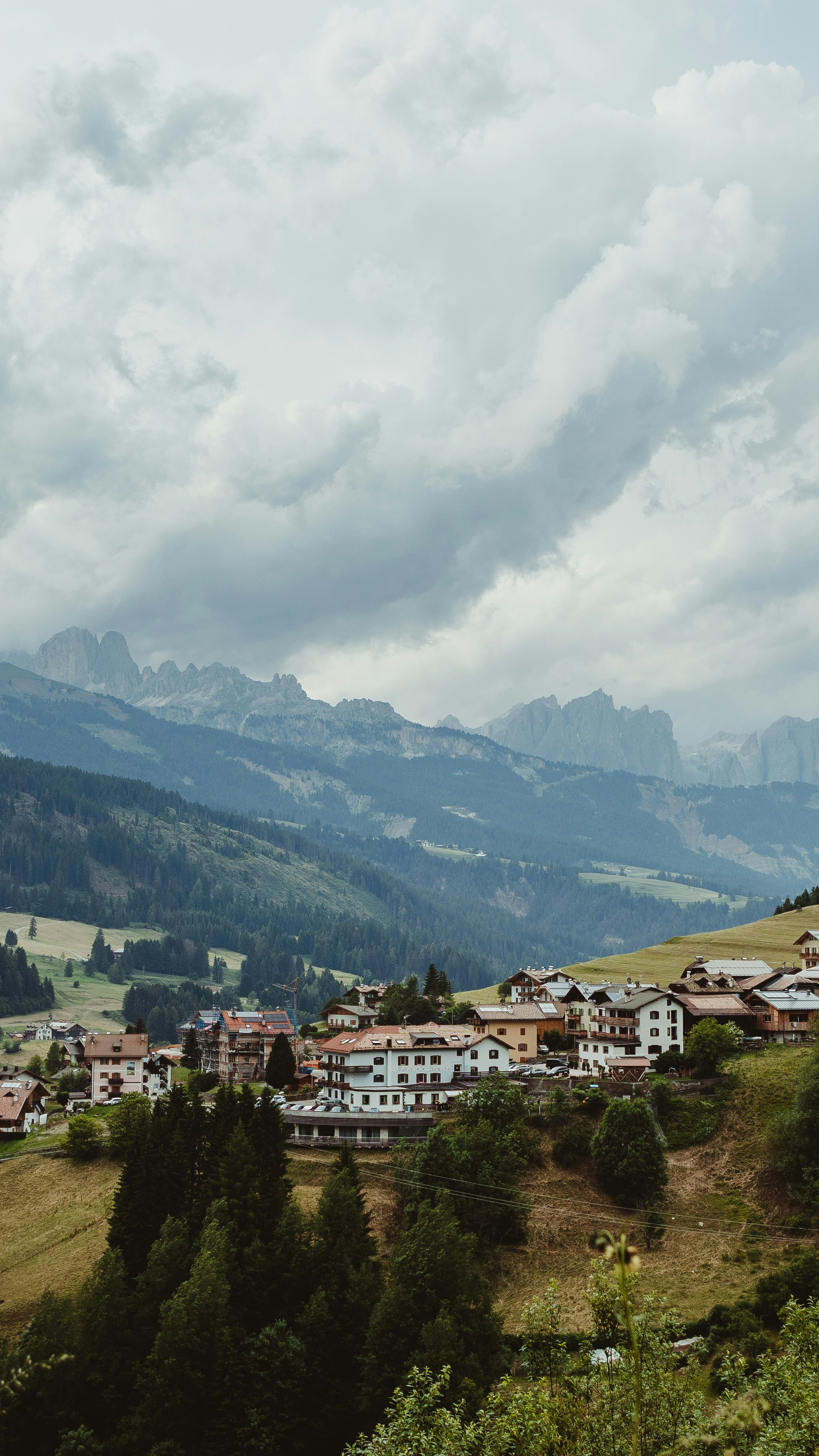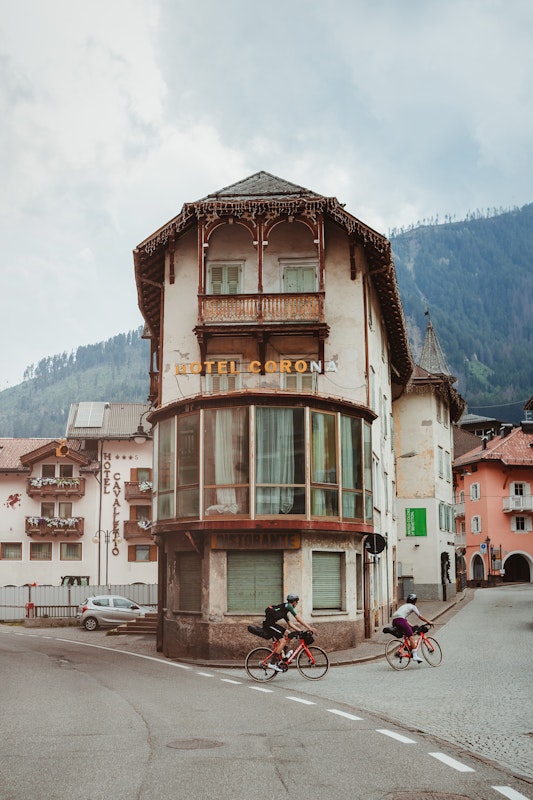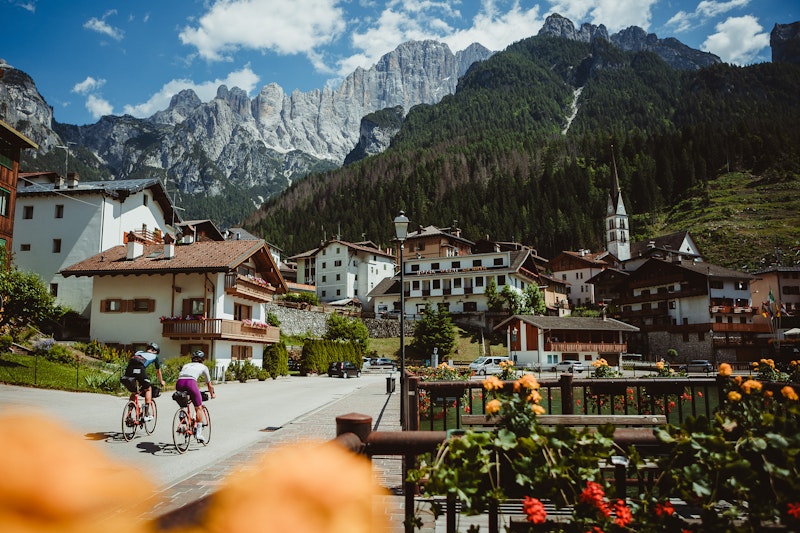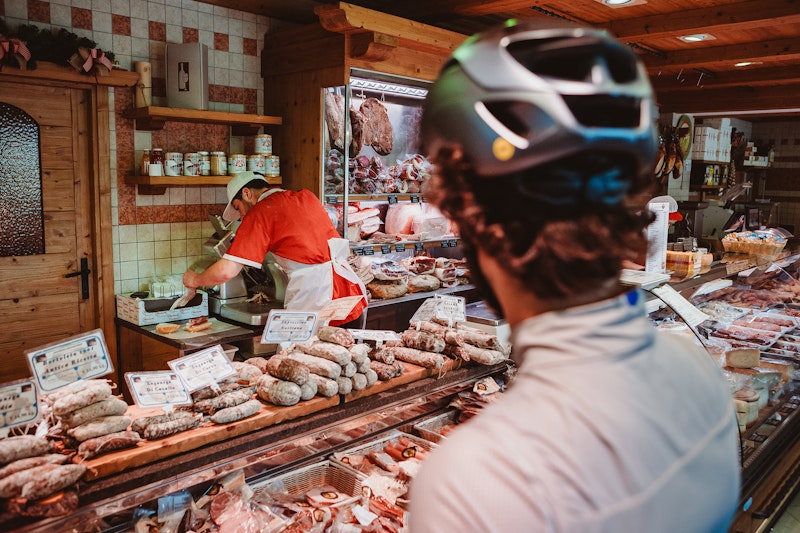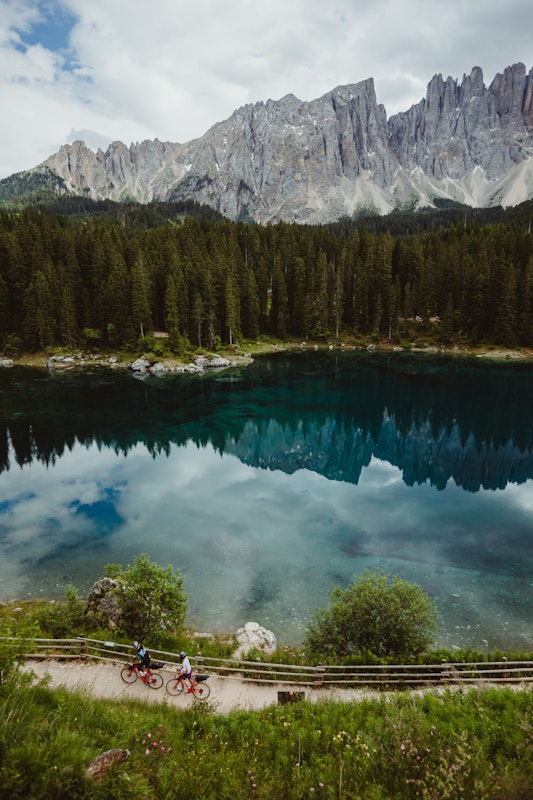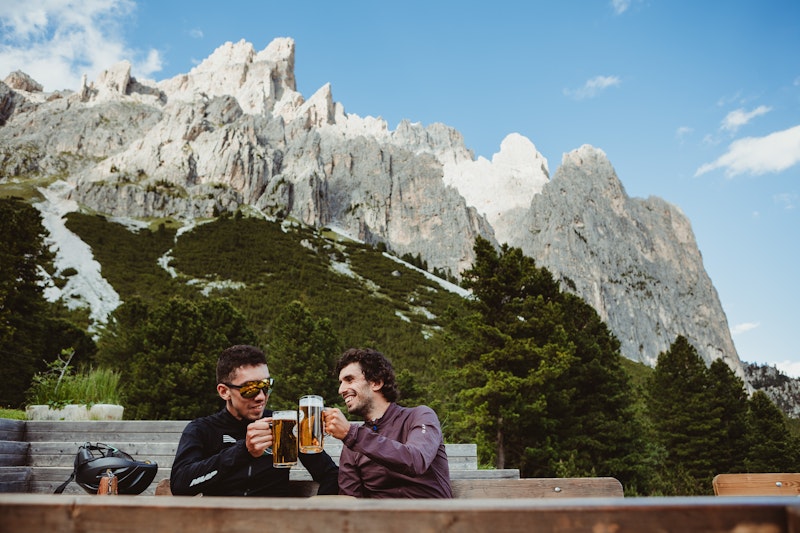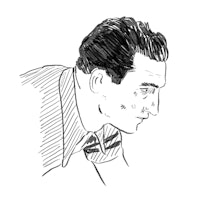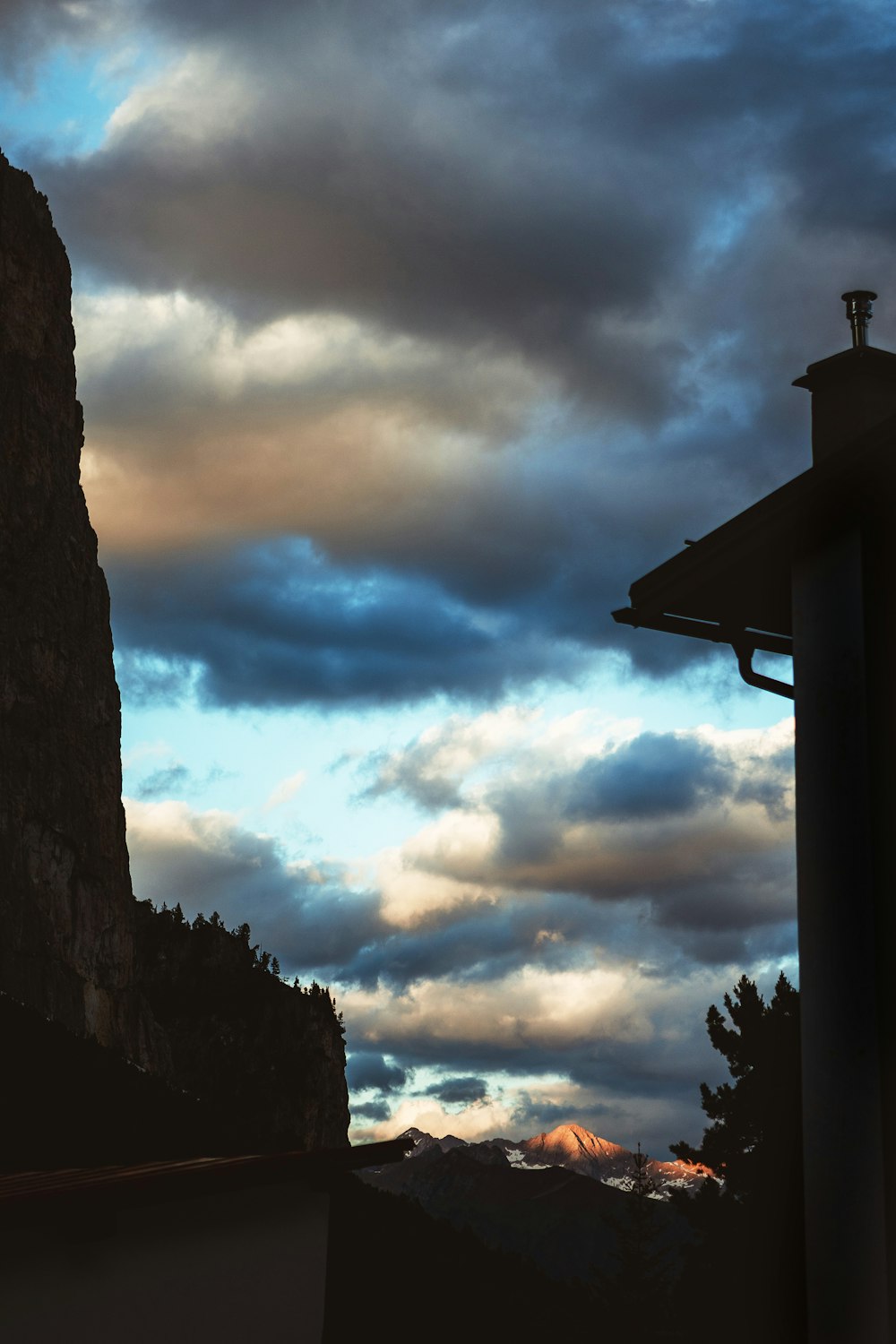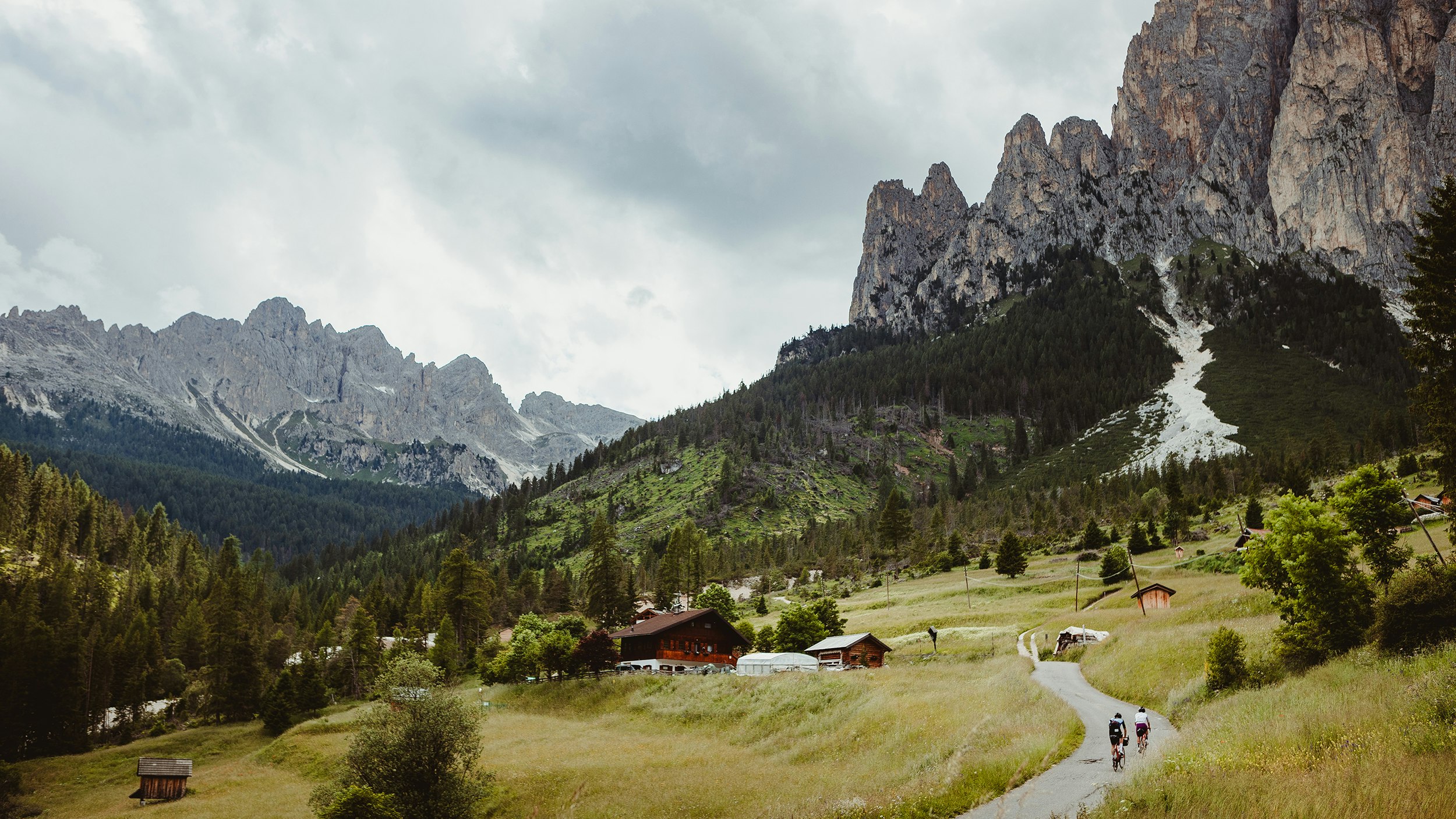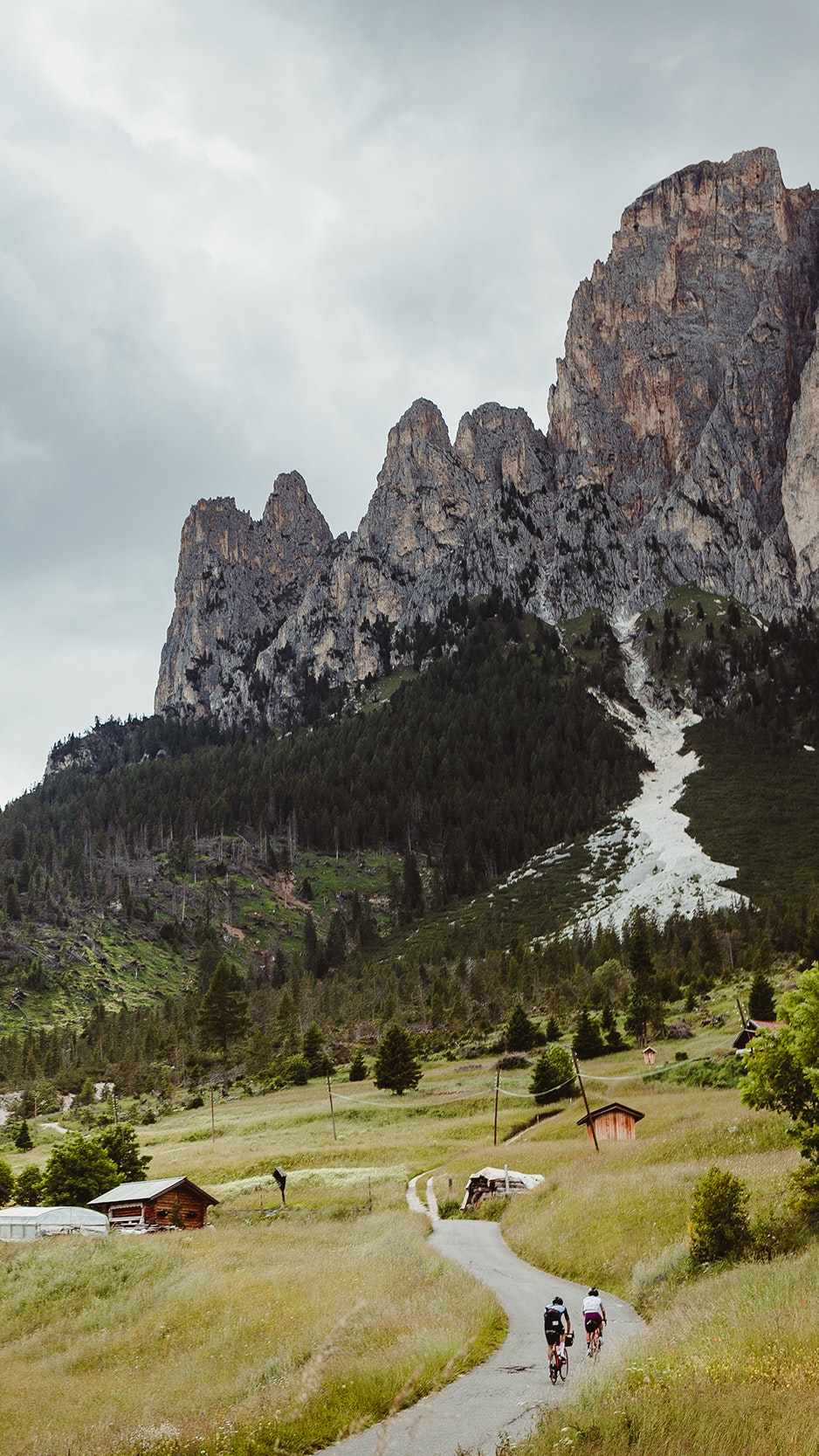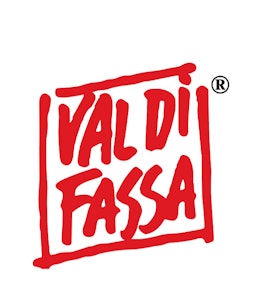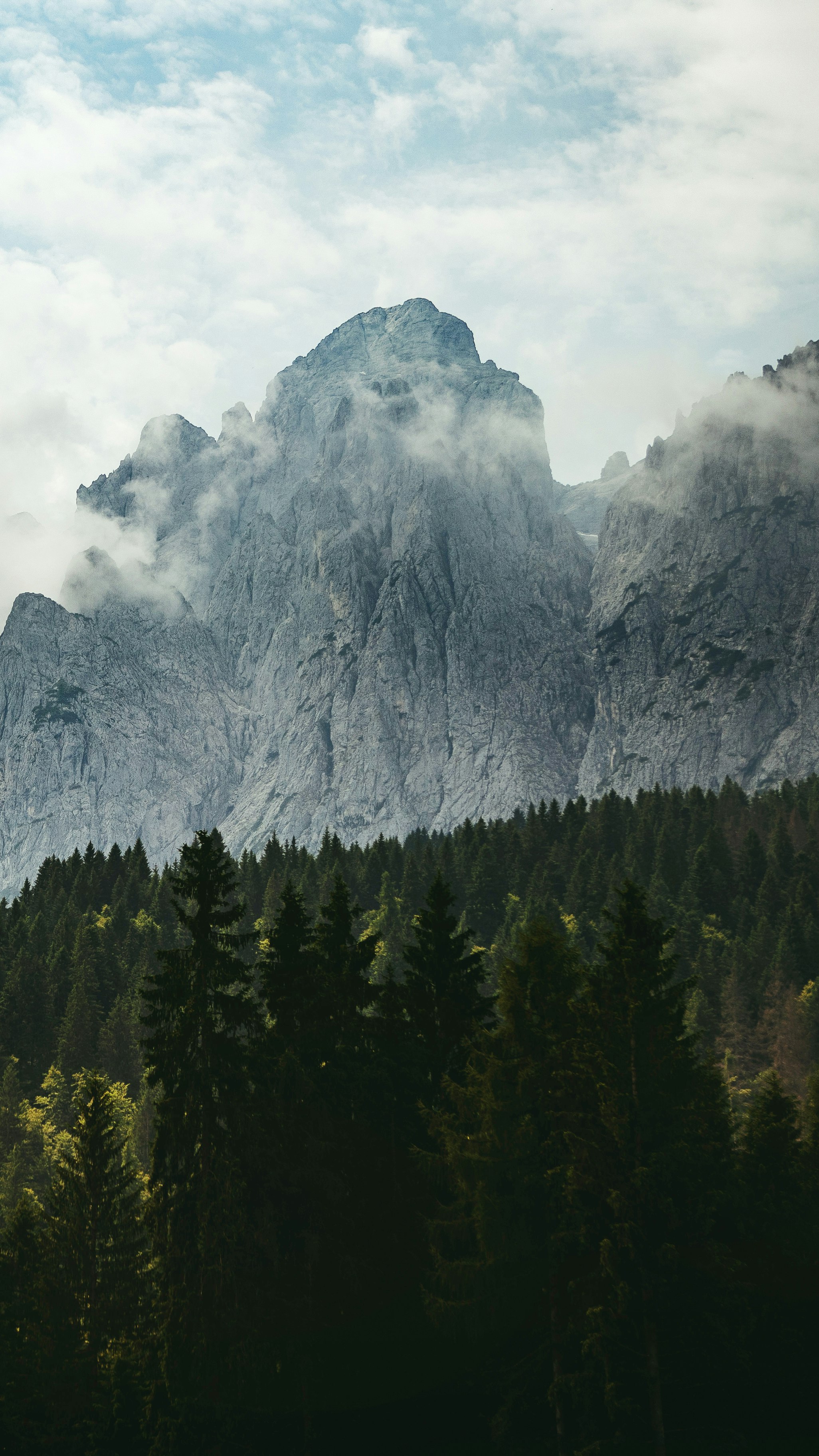
The magic of the monti pallidi
The Val di Fassa will put a spell on bewitch you. If you come once, you’ll have to want come again back.
Period
May - Oct
Elevation difference
7862 m
Total Length
269 km
Duration
3 Days
T
The magic of the monti pallidi
00
Intro
01
The wide embrace of the Marmolada
02
From the Agordino to the Val di Fassa, over the Passo Rolle
03
Val di Fiemme, Lavazé and Costalunga
04
Grand finale at Gardeccia
The same thing happened to my parents, thirty years ago, when they chose Canazei as a holiday destination for the whole family, both in summer and winter.
When I set off on my three-day bikepacking adventure, the Val di Fassa and its surroundings were places I already knew. Some of the slopes, however, were unknown to me, and other areas I had only been to with skis or hiking boots. And yet all of those mountains felt familiar. I can now distinguish and point to most of the mountains around here: the Catinaccio and the Pale di San Martino, the Sassolungo or the Puez-Odle group. Not that there’s anything useful in this.
But for Donato, a friend, companion and mechanic in this pedal power adventure, everything is totally new.
Several times on the road I find him with his mouth wide open, astonished at the beauty all around him. As the extremely practical and foresighted person he is, it was his initiative to mount bags on both of our bicycles, give the tyres one last pumping up, and measure with precision the height of our saddles.
All of this is done strictly the night before departing, at the Hotel Chalet Alaska in Pozza di Fassa.
From the window of the room where Donato is tinkering on the bikes, I can see the Aloch slope, where the national ski team trains in winter. For a couple of days a week it’s also open to the public, illuminated by large floodlights. But in the morning, when we decide to leave, it’s the sun that’s been shining on Cima Undici and Punta Vallaccia for a few hours, just behind the Aloch chairlift.
As we ride up the Avisio on the cycle path towards Canazei, the sequence of villages sounds like a nursery rhyme: Pera, Mazzin, Campestrin, Fontanazzo, Campitello. Between Alba and Penia the path is completely enveloped in a cloak of trees and then, just as you think I want to stop now and put my feet to chill in the waters of the Avisio, the path finishes and the ascent towards the Marmolada begins.
The one going up from Canazei is the easiest slope. For us, however, weighed down as we are with bags and food, it’s harder than expected. Going up, after four hairpin turns, we pass through a sequence of tunnels, all open and naturally lit, except for the very last one. At its exit, we see the Fedaia Lake dam. Like many other cyclists who have arrived at mountain pass signpost, we ride along the cobblestones that cover the road over the dam and enjoy the amazing view. In my opinion, these two flat kilometres along the lake are probably the most beautiful in Italy: above 2.000 metres altitude, with the Dolomites and green meadows all around...You forget you’re cycling.
Because the canyons of Sottoguda, the ‘serrai’, are still closed – works to repair the damage caused by the 2018 Vaia storm should be completed by summer 2024 – we take, downhill, the road that in the opposite direction decided the fates of the 2023 Giro d’Italia. The writings on the asphalt still clearly visible, the final 15% gradient ramps, the straight road at Capanna Bill that we hit at 80 km/h: the Marmolada from Malga Ciapela, ominously nicknamed the Cemetery of Champions… this is a legendary climb. We bump into my old friend Daniele. He’s cycling the way up, and I have the ill-judged idea of giving him a hug, drenched in sweat as he is after the climb…not a nice experience.
All the photos we’ve taken at the top of the Fedaia Pass have made us hungry and a pizzeria in Sottoguda suits us perfectly. We lose a few minutes among the narrow streets of the village, but it’s worth it: old barns – which here, in Ladin, are called tabièi – and wrought iron shops, among elegant, well-kept wooden houses.
At Alleghe, the Cordevole torrent opens up into a pretty little lake with emerald green waters reflecting the surrounding woods. A cycle path along the lake short-cuts several kilometres off towards Cencenighe.
We are about to return to the Trentino region, which after Fedaia we had left behind to enter Veneto. But we’re actually still quite far from Trentino: the 18 kilometres that climb from Cencenighe to the San Pellegrino Pass, at an average 6% gradient, give a better idea of our cruising speed. Apart from the initial tunnel in which Donato – who is understandably afraid of cycling in the dark – climbs at around 1.300 watts, the way to Falcade Alto is all in all a normal ascent. It’s very long, undoubtedly, but there’s a couple of long flat stretches between Canale d’Agordo and Falcade where you can catch your breath. There is also time to get acquainted with some of the achievements that Canale d’Agordo can boast: besides being the town where Pope John Paul I was born, it’s here that the first brewery and cooperative dairy in Italy were opened.
The hairpin turns between Falcade and Falcade Alto are the most scenic segments of the ascent.
I make a mental note, the only kind you can make at an 8% gradient, of a parish church where the grey stone stands out against the white plaster.
It is, I later discover, the parish church of the Beata Vergine Immacolata.
And we very nearly have an apparition of Our Lady a few kilometres further up. After the crossroads for the Passo Valles, the gradient increases to 14% and there’s no hairpin bend to alleviate the incline. Donato zips down his jersey completely, the climb doesn’t let up, the trees on the side of the road seem to share our feelings: dead tired, waiting for refreshment, cut down in half. The final steep climbs of the San Pellegrino are now all in Trentino territory. The regional boundary is located at the Zingari pond, above which, not far as the crow flies but invisible to those going up, the rifugio Fuciade would be a perfect destination if only we were riding mountain bikes.
And anyway, we’ve done enough cycling for today. On the San Pellegrino, a fountain in front of the pond allows us to recover some fluids. The Hotel Costabella across the road takes care of the rest. As well as having a meal of epic proportions and proper goodnight sleep, at the Costabella we managed to stay up and chat, read and play cards until late in the evening, feeling very cosy in this beautiful wooden stube.
The next day starts between Cima Uomo and Col Margherita, the two most imposing peaks above San Pellegrino. We immediately start downhill: towards Cencenighe and beyond. A refreshing secondary road allows us to avoid the Listolade tunnel, just a few pedal strokes from Taibon Agordino and today’s first climb: Forcella Aurine. Both this and the next little climb, the Passo Cereda, are nothing compared to what awaits us at Fiera di Primiero: the continuous and endless ascent of the Passo Rolle.
The ascent to the Passo Rolle is so long that it actually counts as two climbs in one. The first part, up to San Martino di Castrozza, is not so remarkable and you do it mainly with your head. A road that is almost completely straight and being in the woods, leaves little to the imagination: just a question of getting over with it.
After San Martino, instead, you climb with whatever you still have left in our legs and lungs: above 1.500 metres altitude with what’s left of you – very little – after an hour’s climb.
We arrive at the Baita Segantini, named after Giovanni Segantini, the Trentino painter of the late 19th century famous for his alpine landscapes. From the vicinity of the Segantini to the Passo Rolle, the road is short and the climb finally flattens out. We go into the first place that can feed us and, needless to say, we run into another cyclist: the manager of the Vezzana hotel speaks in admiration of our bikes and spends a few words of amused envy for our freedom of wanderers. Tired as we were, neither Donato nor I can remember much of meal. It must have been something like pasta with meat sauce, polenta with sausage, strudel. A deep breath and off we go again.
A little rain comes down and it’s getting cold, but the rollercoaster ahead of us will be enough to warm us up. This a dolomitic fun ride has great charm and begins with the dive towards Paneveggio. Before reaching its lake, we keep to the right towards Passo Valles, ascending the torrente Travignolo. The road has a mysterious beauty: narrow, wooded, with no traffic. Close to the Val Venegia side-valley and the pastures at Vallazza, the road is surrounded by meadows where cows graze. Another short descent and then we’re back at the gates of hell, i.e. the last kilometres of the San Pellegrino Pass. Having tackled them the day before doesn’t help much, it’s very hard work. Today’s goal, however, is not the pass. Our goal for the day lies ahead of us in the Val di Fassa, at Soraga.
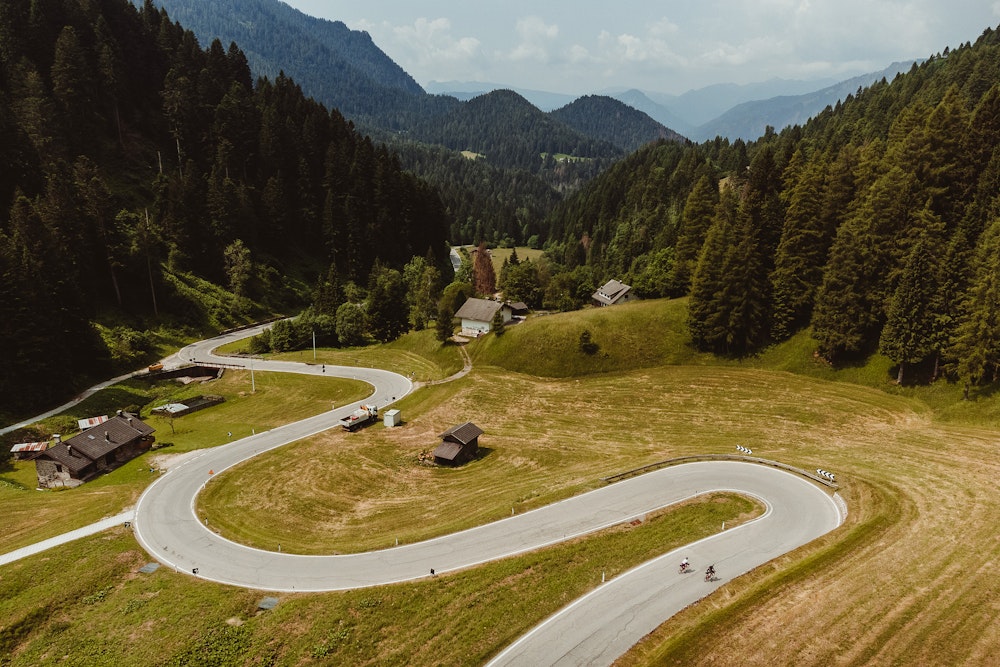
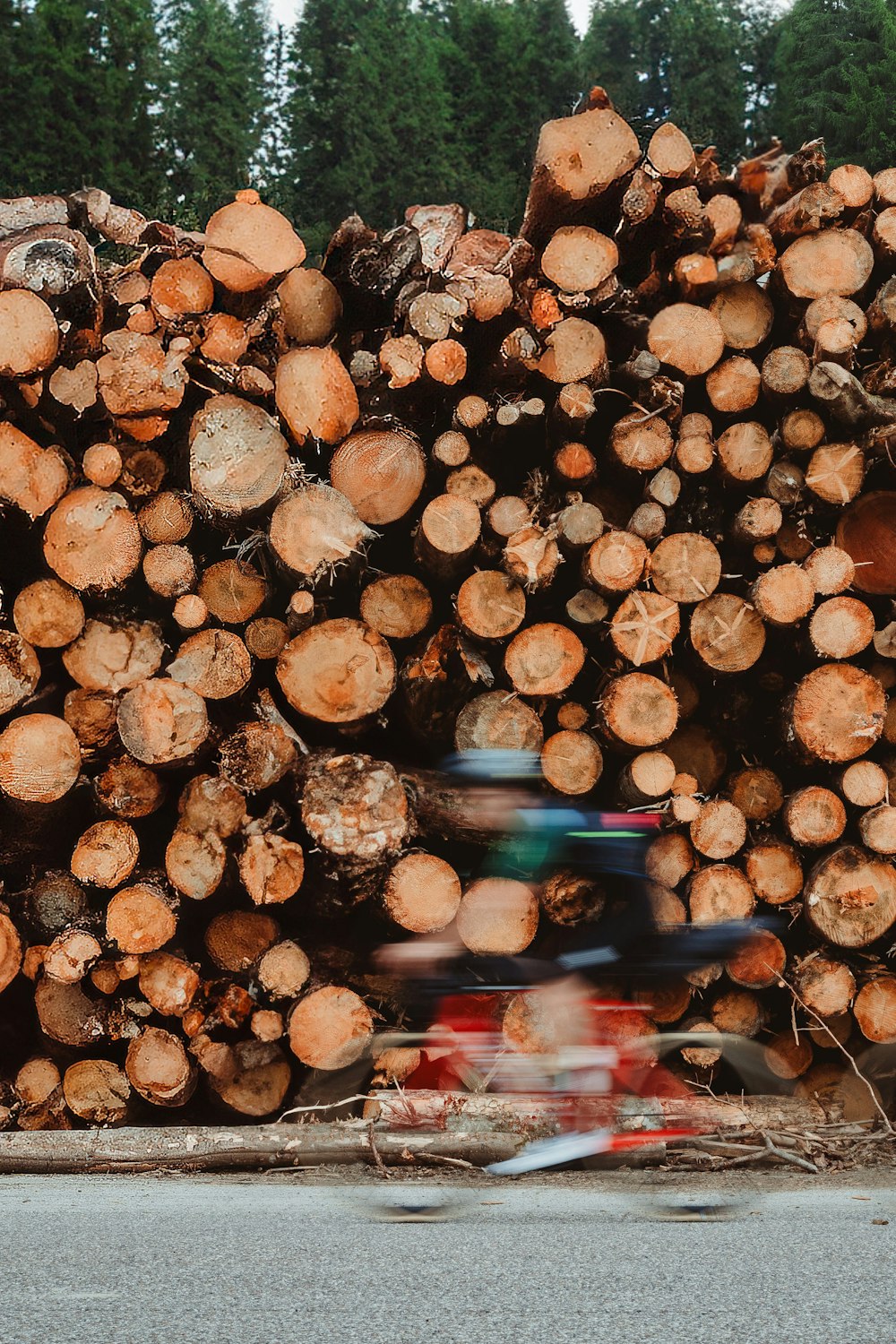
Having crossed the San Pellegrino stream and passed under the cables of the ski-lift of Alpe Lusia, we arrive in Moena in the middle of the afternoon.
We go for a short stroll through the centre, where I find myself in front of a small hotel that reminds me very much of the Belvedere, a hotel with red finishings located on a hairpin turn of the Furka pass in Switzerland. This one in Moena is called Hotel Corona and, instead of Helvetian red, it has green shutters, curtains and blinds, the same green as the meadows of the Val di Fassa all around us. To overcome the Furka-effect, Donato and I try to go around it but the result is only that we get whistled at by a very dutiful policeman, warning us to respect the one-way traffic.
Moena seems to me like the town with the highest rate of windows and balconies adorned with colourful flowers. In this place, setting up a floral hanging garden seems almost obligatory. The effect is as beautiful as are the few kilometres that separate us from the Avisio Park Hotel in Soraga. As soon as we walk into the hotel spa, which is as large as an apartment, the day’s struggles fade into memory.
My attention is grabbed, on my way to the dining-room where buffet is set up, by a poster advertising the Festival Latemar Librianimati, a five-day comics and graphic novel event. The fact they have thought of a children’s literature event in Predazzo, speaks volumes about how important it is, in a holiday place like this, to provide lots of options for the whole family.
ndeed, the next day, we saw entire families riding along the cycle path of the Val di Fassa and Val di Fiemme! Between Soraga, Moena and Predazzo you can hop on your saddle and ride safely, far away from the traffic, thanks to this asphalt strip that runs parallel to the state road. Near the ski jumping stadium in Predazzo we realise that something is wrong with our legs. They just won’t function. We need another dose of breakfast. The butcher’s shop Dellantonio, not far from the church of San Filippo and Giacomo, in the centre of Predazzo, is the place for us.
It was hard to pass up the idea of buying half a kilo of speck for each of us, but we agreed that it was better to have that half kilo portioned in modest quantities inside a sandwich, with the addition of a few slices of Puzzone di Moena. Fortunately, to get all of that food down, there are still a few kilometres to go before we attack the Paaso Lavazè, which is only an appetizer for the climbs ahead of us today. As we climb the mountain, we are struck by the still clearly visible effects of the damage done by Vaia storm of autumn 2018: the forest, just a few kilometres from the summit, is almost entirely torn up. The almost apocalyptic landscape is a stark contrast with the great beauty of roads, villages, sceneries that have filled our eyes over the previous days.
We are consoled by two things that alleviate the sight of such a wounded landscape: the clear sky and the even bluer colour of the lake at the top of the pass.
A fast descent through the forest leads us to Novale and Ponte Nova.
According to legend, the nymph Ondina was indifferent to the rainbow used as bait by the sorcerer Latemar who wanted to make her his own. Angered by Ondina’s refusal, Latemar threw the rainbow into the lake, which shattered into a thousand pieces, infusing the waters with colours and reflections that look like a magic spell.
We are now looking at the Latemar Mountain range from the north-west and, perhaps in the grips of an attack of pre-prandial madness, we decide to cross the Nova Levante stream and tackle an almost vertical climb towards the village of Laner. The altimeter claims it’s a kilometre and a half at a 12% gradient, but in our legs, it feels like climbing the Paddo Mortirolo starting from Mazzo. Finally, in Nova Levante we have time to sit at a table and let the oxygen return to our brains, also aided by a generous plate of pasta.
For the ascent to the Costalunga, on the western side, the following rule applies: when you are at Lago Carezza, hidden among the fir trees of the upper Val d’Ega, take a moment to catch your breath because you are almost at the top. According to legend, the nymph Ondina was indifferent to the rainbow used as bait by the sorcerer Latemar who wanted to make her his own. Angered by Ondina’s refusal, Latemar threw the rainbow into the lake, which shattered into a thousand pieces, infusing the waters with colours and reflections that look like a magic spell. Today, squinting your eyes a little, you can see Ondina’s statue in the middle of the lake. The descent from Costalunga is the closest you can get to a motorcycle race on a non-motorised vehicle. Fast corners, delicate use of breaks, excellent asphalt: in the blink of an eye Vigo is within pedal reach. Back in the Val di Fassa, only one last climb awaits us, the toughest, perhaps the most fearsome. We attack it further north of Vigo, beyond Pera, beyond Pozza: the ascent to the rifugio Gardeccia.
The last time the Giro d’Italia arrived up here, in 2011, it was a legendary stage. Nearly 230 kilometers and 7,000 meters of elevation difference, it was the third stage in a triptych of uphill finishes that had lined up Großglockner and Zoncolan over the previous two days. Mikel Nieve won over Stefano Garzelli. The last to finish, Matthew Wilson and Michael Mørkøv, took eight hours and fifteen minutes.
The Gardeccia packs a heavy punch right away, in the first kilometre. Slopes of up to 18% gradient, lead you towards the town of Muncion, then it’s all a succession of even severer climbs, spaced out by short stretches of slightly sloping ground. A narrow road between trees and rocks, double-digit gradients, patches of gravel to avoid here and there, hikers taking you for a fool: hard to find a steeper climb. The last stretch before we reach our last destination, the rifugio Gardeccia, located between the Torri di Vajolet and the Gruppo del Catinaccio, is on a dirt road.
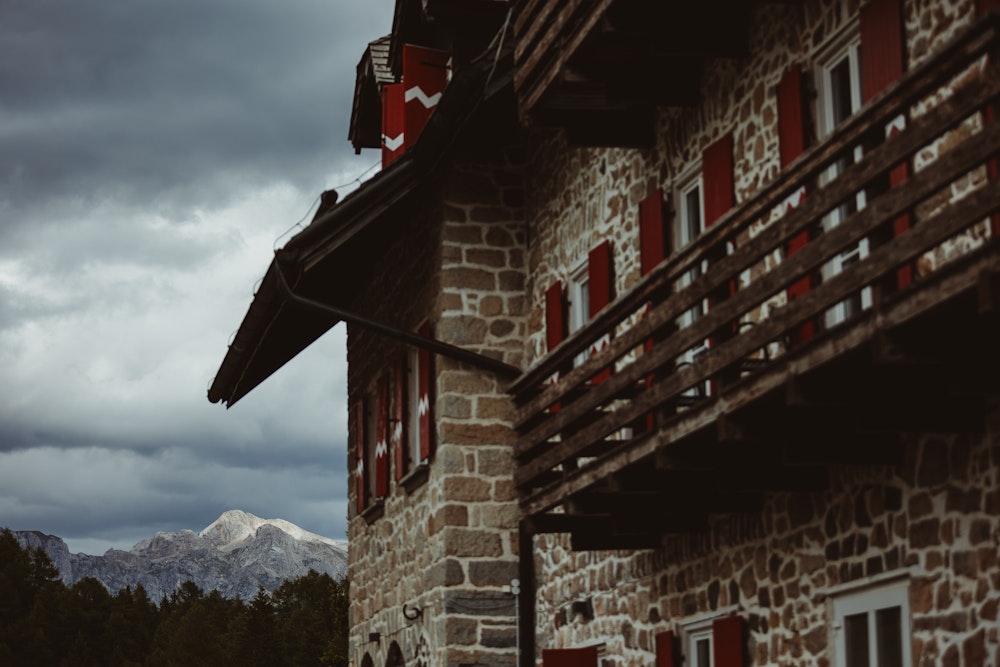
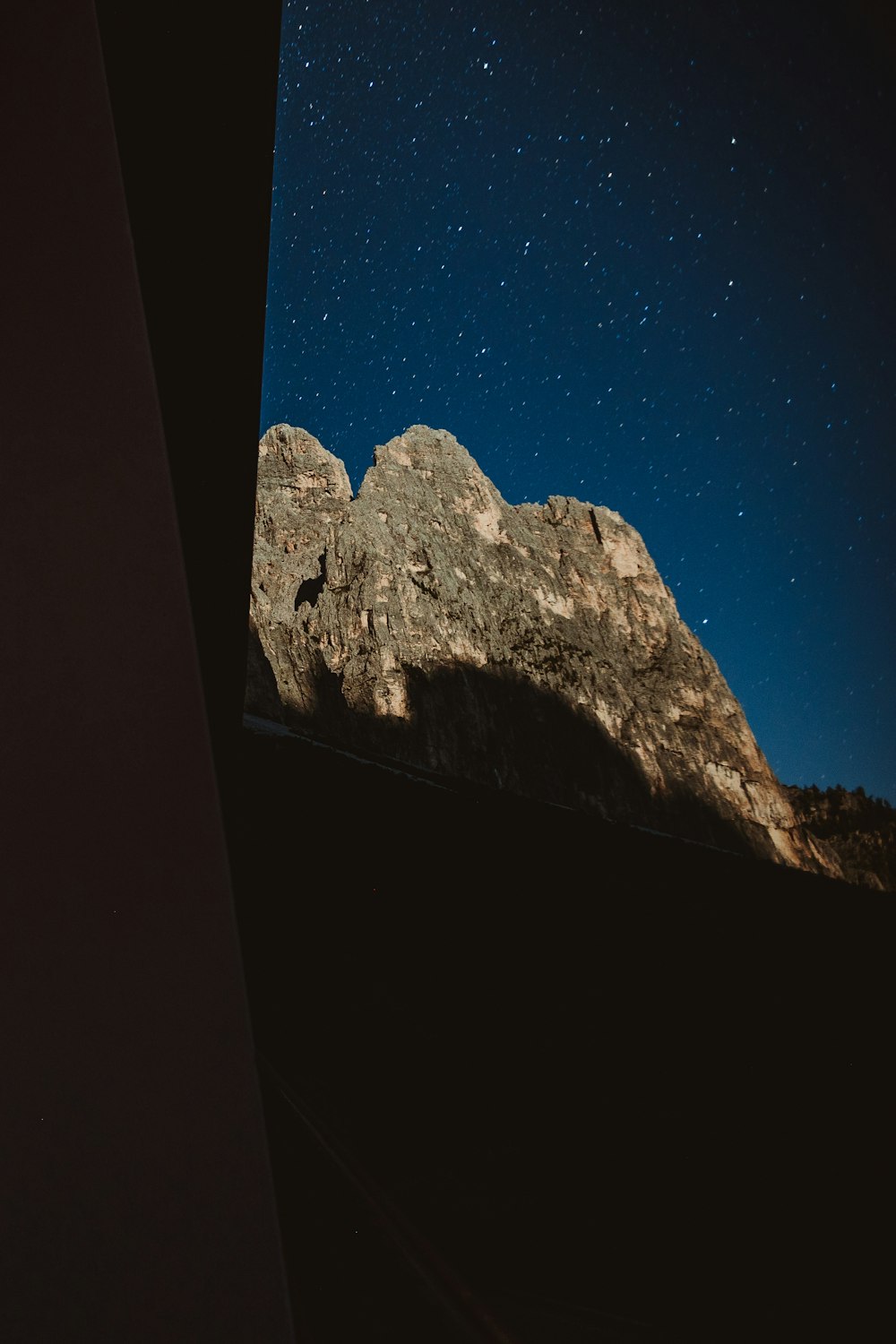
You can’t eat what you want, but only what’s available. Bathrooms are shared. Breakfast is served at a set time and one has to adjust. It might get cold at night.
Yet there is nothing like sleeping in the mountains, in remote outposts of humanity. It’s a different kind of humanity that spends their nights in mountain huts: there were some hikers with us who, the next morning, got up at dawn to go climbing. And when they told us, we gave them the same look, amazed and incredulous, that they gave us when we told them about our three-day bike ride. In the evening we treat ourselves to few more beers – something you always seem to find, even in mountain huts– only because tomorrow will be downhill all the way back to Pozza.
I had been to this place many times before, years ago. A couple of shuttle busses would take the people up here, to the end of the asphalt, and then the hikers walked to Lago Antermoia or the rifugio Re Alberto. I remember my mother's flannel shirt and all the times that walking ahead of her, my brother and I would stop at the Rifugio Passo Principe to play cards to kill time!
I think I’ve finally made it clear. What I have described is, in fact, a long list of reasons why, when one discovers the Val di Fassa, they will inevitably want to come back. It is not only the mountains, the food or the fresh air that binds people to these places forever: it is the stories, the memories that make us want to come back. And then back, and back again, to discover something new every time.
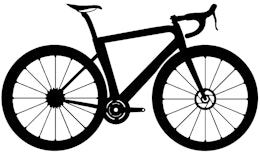
Bike type
Road
* informazione Publiredazionale
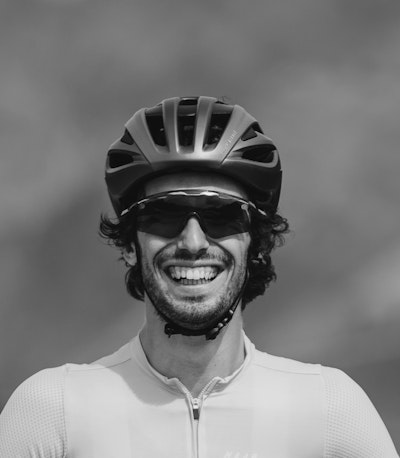
Texts
Michele Pelacci
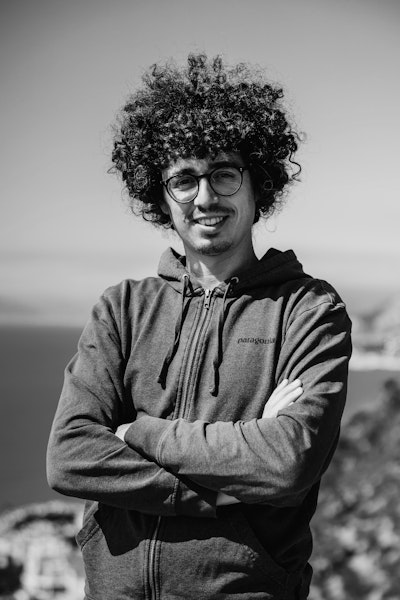
Photos
Nicola Damonte
Cycled with us
Donato Cafarelli, Michele Pelacci
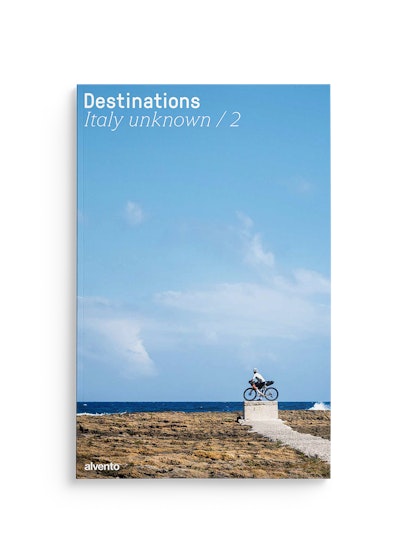
This tour can be found in the super-magazine Destinations - Italy unknown / 2, the special issue of alvento dedicated to bikepacking. 12 little-trodden destinations or reinterpretations of famous cycling destinations.
